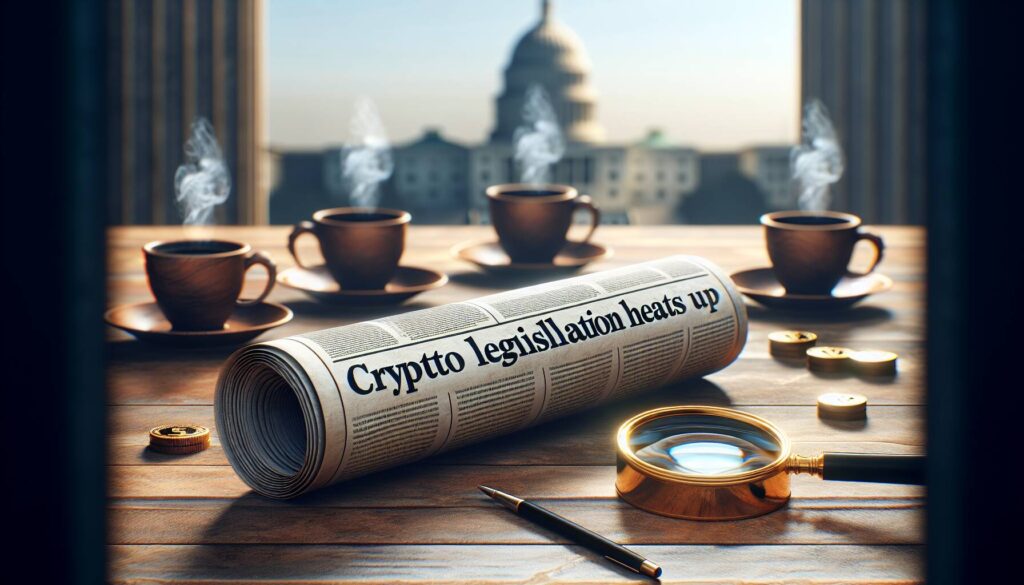As Congress reconvenes after its summer break, the focus turns to the intricate relationship between the cryptocurrency industry and government legislation. The next four months of 2025 promise to be pivotal for crypto, especially following the introduction of the GENIUS Act aimed at stabilizing stablecoins. However, the much-anticipated market structure bill remains under discussion, signaling that significant legislative work is still pending.
In recent developments, the House of Representatives has made strides by passing the Digital Assets Market Clarity Act, which received strong bipartisan support. Yet, the Senate’s approach differs, with the Banking Committee exploring definitions and frameworks for “ancillary assets.” This divergence highlights the complexities inherent in crypto regulation—a sector that straddles both securities and commodities oversight, necessitating collaboration between the Banking and Agriculture Committees.
“The SEC and CFTC are also stepping up, issuing joint guidance on spot trading while laying out their priorities in crypto regulation,”
With critical deadlines looming, including one from Banking Committee Chairman Tim Scott, the outcome of this legislative effort will likely shape the future of cryptocurrency in the United States. Simultaneously, federal regulators are actively seeking to harmonize their efforts, indicating a robust regulatory landscape is on the horizon.
As the crypto community holds its breath, the coming weeks will reveal whether Congress can navigate pressing governmental issues alongside its commitment to shaping the future of digital assets. Stay tuned for updates on this evolving story as we track the intersection of cryptocurrency and legislation!

Current Focus of Cryptocurrency Legislation as Congress Returns
Here are the key points from the current legislative landscape impacting cryptocurrency:
- GENIUS Act Passed: This act focused on stablecoins has already been a significant development in 2025.
- Market Structure Legislation in Progress: A key market structure bill remains unfinished, highlighting ongoing discussions in Congress.
- Bipartisan Support Critical: The success of legislation, such as the Clarity Act passed by the House, will require bipartisan support in the Senate.
- Senate Committee Efforts: The Senate Banking Committee is defining “ancillary assets” while awaiting further progress from the Agriculture Committee.
- Deadline of September 30: Banking Committee Chairman Tim Scott has set this deadline for advancing critical legislation.
- Regulatory Collaboration: The SEC and CFTC are working together to streamline crypto regulations with a joint roundtable scheduled for September 29.
- Investor Guidance Expected: Federal regulators are highlighting the importance of seeking guidance for crypto trading and plan to propose new rules by April.
The developments in legislation and regulation will significantly impact the crypto market, guiding investors and shaping future landscapes in the industry.
Crypto Regulatory Landscape: Key Developments and Implications
The landscape of cryptocurrency regulation is evolving rapidly, particularly as Congress grapples with the final months of 2025. Recently, attention has been drawn to significant legislative movements that aim to define and structure the burgeoning crypto market. This comes against the backdrop of other pressing political issues, notably the need for a funding bill, highlighting the complex interplay between crypto advancements and broader governance priorities.
In comparison to previous legislative initiatives, the current push towards a comprehensive market structure bill presents both opportunities and challenges. The earlier passage of the GENIUS Act, which focused primarily on stablecoin regulations, paved the way for further discussions about broader crypto market oversight. The bipartisan support for the Digital Assets Market Clarity Act reflects an increasing acceptance of cryptocurrency in mainstream politics, potentially positioning it for smoother implementation in the face of regulatory uncertainty.
However, the Senate’s fragmented approach, with separate drafts from the Banking and Agriculture committees, poses a significant challenge to cohesive regulatory progress. The necessity for bipartisan support to meet the 60-vote threshold in the Senate adds an additional layer of complexity. If favorable legislation does not advance by the September 30 deadline set by Banking Committee Chairman Tim Scott, it could delay the important clarity the market seeks, impacting innovation and investment in the crypto space.
The swift actions taken by federal regulators like the SEC and CFTC have created a dynamic backdrop to the legislative maneuvers. Their joint statement on spot trading of cryptocurrencies signals a willingness to provide guidance, yet the vagueness regarding which assets are permissible can be bothersome for compliant firms attempting to navigate a nascent regulatory environment. The SEC’s plans to propose rules on crypto asset sales further illustrate their proactive strategy, but it also underscores the confusing landscape for businesses seeking regulatory certainty.
This regulatory environment can benefit institutional investors and compliant firms as clarity potentially leads to increased legitimacy and safety within the crypto market. On the flip side, uncertainties may hinder innovation and create barriers for new entrants who don’t have resources to navigate shifting regulations smoothly. Additionally, high-stakes negotiations and the potential for drawn-out legislative processes might disenfranchise smaller players who could struggle under prolonged indecision.
For stakeholders and interested parties in cryptocurrency, this period is critical. The outcomes of pending legislation and regulatory actions could reshape the landscape, creating either a flourishing ecosystem or a stifling environment depending on the legislative direction taken in these final months of 2025.

















